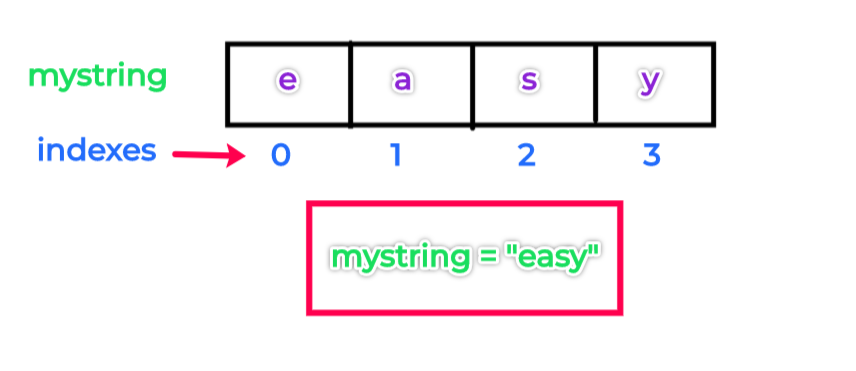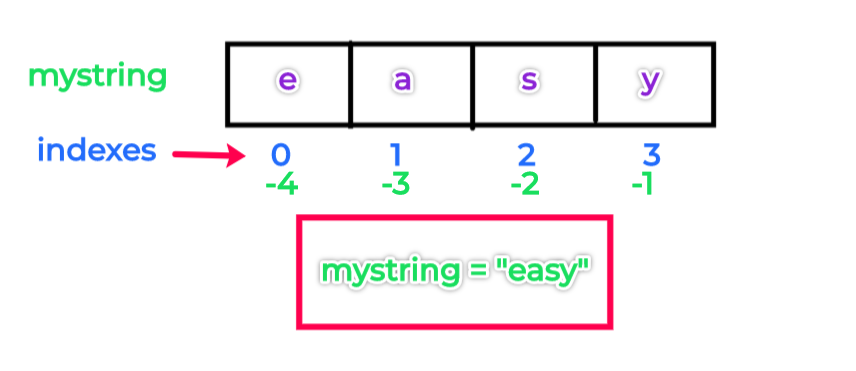Python Strings
Table of Contents
Python String Datatype
A string literal is simply a list of characters (textual data) in sequence surrounded by quotes.
A character can be anything like numbers, backslash or letters and can also have space.
For example,"easy"is a string.
It is a four character long with each characters in sequence "e", "a", "s", "y"
We can assign the same string to a variable as follows
mystring = "easy" # create a 4 character string objects and assign it to name "mystring"
mystring is the variable name to which the string object is assigned.
There are fours ways you can declare a string literal (or create a string object) in Python i.e. single quotes ('), double quotes ("), triple double quotes (""") and triple single quotes (''')
Example:
string1 = 'It is a single quoted string'
string2 = "It is a double quoted string"
string3 = """It is a triple double quoted string"""
string4 = '''It is a triple single quoted string'''
multiline_string1 = """
This is a
sting in multiple lines
"""
multiline_string2 = '''
This is a
sting in multiple lines
'''
unicode_string = u'e\xc4sy'
print(type(string1))
print(type(unicode_string))
<class 'str'>
<class 'str'>
type() - is a built-in function which returns the type to which the object belongs. Refer to https://docs.python.org/3.7/library/functions.html#type
multilinestring1 and multilinestring2 are multi-line string literals. We can write multiple line texts/string using triple double quotes (""") and triple single quotes (''')
unicodestring is unicode string literal.
Indexing in Python String
The characters are stored in order or sequence in the memory with a particular position assigned to each of the character.
The positions or the offsets are known as index.
Example:
mystring = "easy" # create a 4 character string objects and assign it to name "mystring"
When we assign the value "easy" to mystring the value get stored in memory as follows
 The first item or character "e" is at index 0 and the second item "a" is at index 1 ans so on
The first item or character "e" is at index 0 and the second item "a" is at index 1 ans so on
Items or characters from the string can be retrieved by using the name ( e.g. mystring ) and these indexes. The process is called indexing
As "e" is at index 0 we can retrieve and print "e" using name mystring as follows
print(mystring[0])
e
To retrieve "a" and others
print(mystring[1])
print(mystring[2])
print(mystring[3])
a
s
y
Negative Index
we can also index backward. The above positive indexes from 0, 1, 2 and so on -count form left to right.
The negative index count from right to left starting with -1 e.g. -1, -2, -3.
So from the previous example mystring = "easy", if we want to retrieve "a" using mystring and negative index we can write
if we want to retrieve "a" using mystring and negative index we can write
print(mystring[-3]) # is same as mystring[1]
a
So the value at 1 is same as -3 and 0 is as index -4
Slicing
We can also extract a portion of a string using indexes know as slicing.
The syntax is
variable_name[I:J] # Gives everything in variable_name from I to J, but not including J
Example:
print(mystring[1:3])
as
So it extracts the string from offset/index 1 to 2 (Not including 3)
Python String Methods
Please find all the list methods with examples here - https://www.pythoneasy.com/python-programming-tutorial/python-string-methods